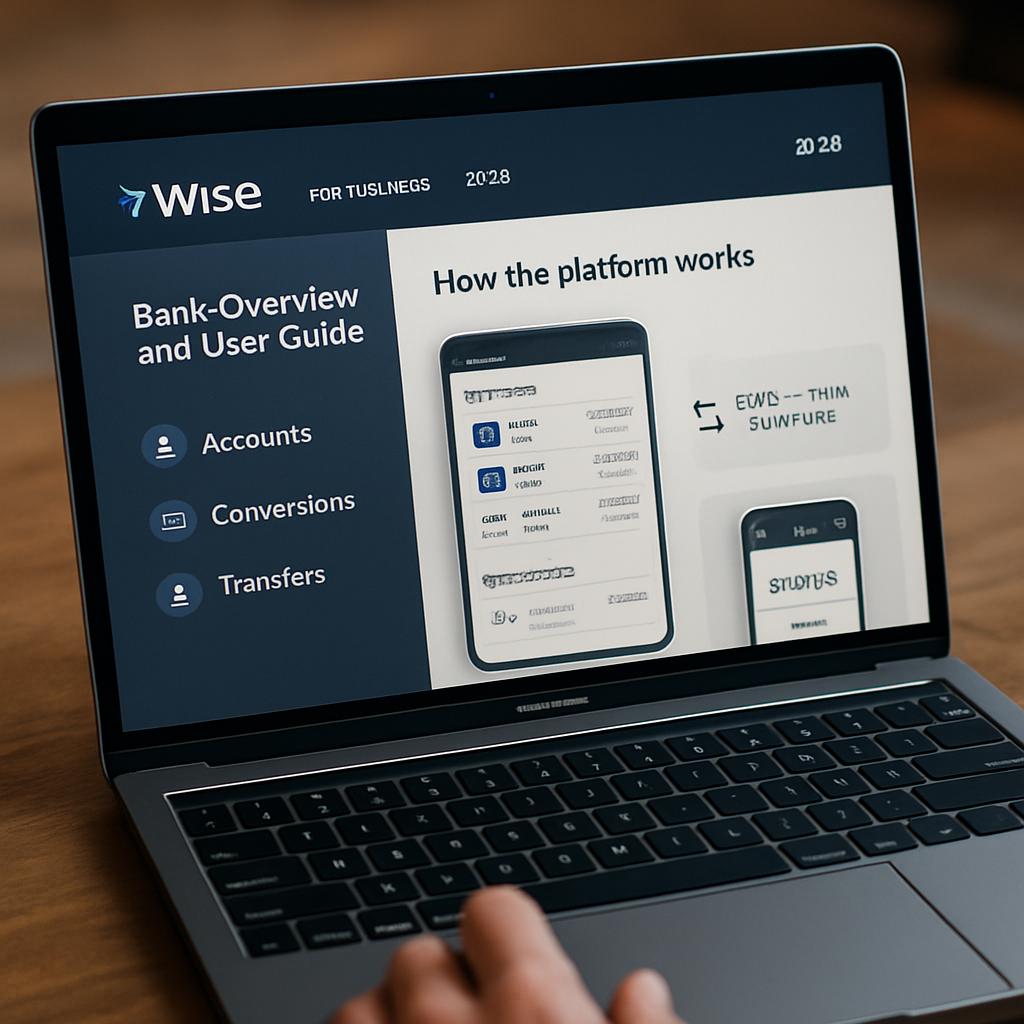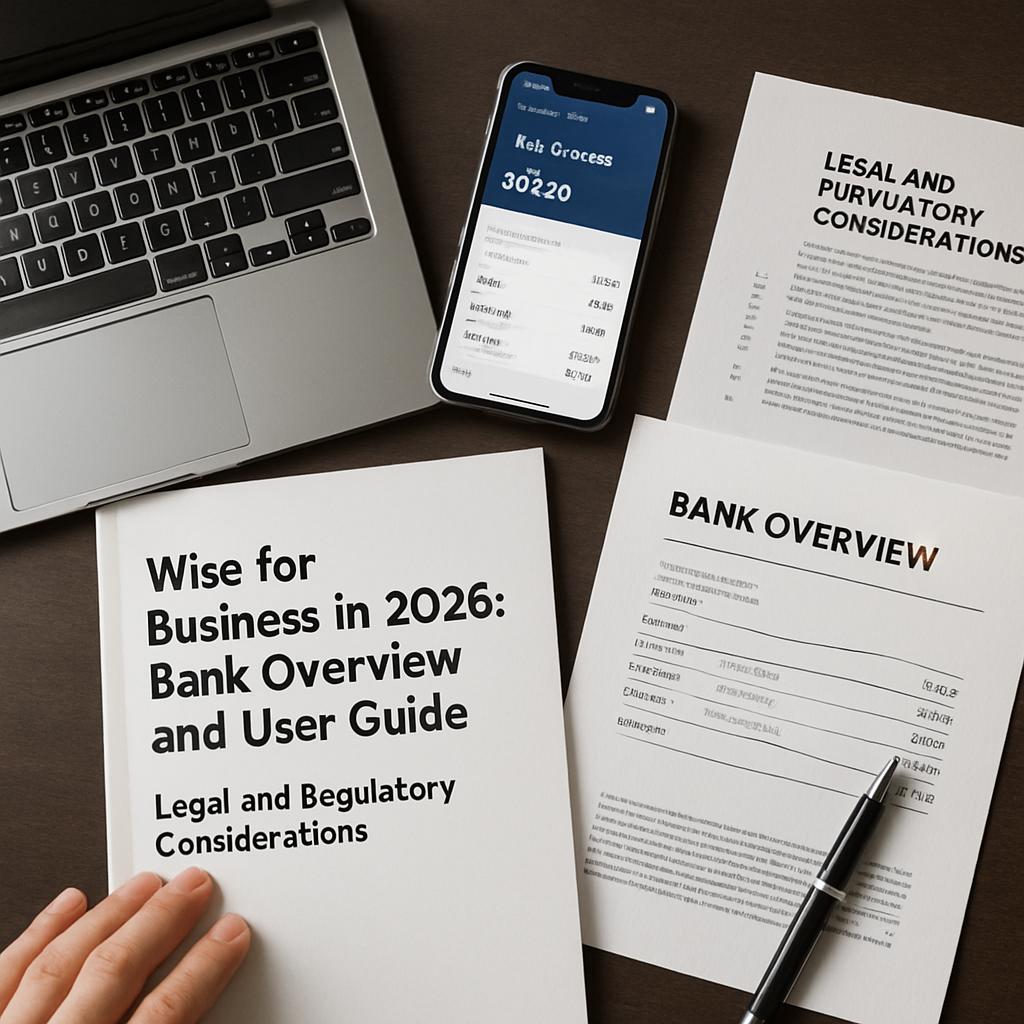In 2026, financial tools look familiar but act faster, and Wise for business sits at the center of many small and medium enterprises’ cash flows. This guide walks through how Wise functions now, what to expect from its services, and how teams actually use it day to day. Whether you’re deciding to open a business account or optimizing international payables, you’ll find practical steps, real examples, and hands-on tips.
- what Wise offers to businesses today
- Go to the Wise website (click)
- how the platform works: accounts, conversions, and transfers
- account types and eligibility
- step-by-step setup: opening and verifying a business account
- pricing breakdown and what to expect
- limits and scale: what businesses should know
- security and compliance in 2026
- cards, spending controls, and expense workflows
- API and automation: integrating with your stack
- integrations and the modern finance stack
- tax, bookkeeping, and reporting best practices
- real-world use cases and stories
- when Wise may not be the right choice
- advanced tips and operational hacks
- managing multi-user access and roles
- customer support and dispute resolution
- comparing Wise to competitors
- legal and regulatory considerations
- onboarding checklist for finance teams
- pricing negotiation and volume discounts
- future-looking features to watch
- final practical checklist before you switch
what Wise offers to businesses today
Wise began as a low-cost international transfer service and has grown into a full-featured business account that can hold balances in dozens of currencies, issue cards, and integrate with bookkeeping platforms. In 2026 its emphasis remains the same: speed, transparency, and predictable pricing across borders. That focus shapes every product update and the way businesses choose to route payments.
Go to the Wise website (click)
At its core, Wise provides multi-currency accounts with local bank details in key markets, fast cross-border transfers using smart routing, corporate cards (physical and virtual), and an API for automation. These building blocks are what make Wise attractive for startups, freelancers, remote teams, and exporters who need low-friction international payments. You won’t find full retail branch networks or conventional lending bundles here; instead you get a lean digital-first banking toolkit.
how the platform works: accounts, conversions, and transfers

Opening a Wise business account gives you balances in multiple currencies and access to local receiving details—like an EU IBAN, UK sort code, or a US routing and account number—depending on your residency and entity type. That means customers and partners can pay you using domestic bank transfers, cutting fees and time compared with SWIFT-based receipts. Those local rails are core to Wise’s cost advantage.
Currency conversion on Wise is transparent: it uses mid-market rates and adds a clearly stated conversion fee. In practice this usually beats traditional banks, particularly for cross-border transfers. Another difference is the speed; many transfers between Wise accounts happen instantly, while bank-to-bank international moves are often faster than five years ago thanks to partnerships and smart routing algorithms.
account types and eligibility
Wise supports a range of business entities: sole proprietors, LLCs, corporations, and non-profits in most jurisdictions where it operates. Account eligibility depends on the country of registration and the nature of your business. High-risk industries may face stricter onboarding checks or limited features.
The sign-up process is largely digital. Expect to supply company documents, proof of identity for directors and beneficial owners, and sometimes a brief description of the business model. KYC remains the gating factor; in my experience, having clean, up-to-date incorporation documents and a short, clear business description speeds approvals considerably.

step-by-step setup: opening and verifying a business account
Setting up a Wise business account is intuitive, but attention to detail is essential. Start by preparing the paperwork: certified articles of incorporation, government ID for signatories, and proof of address. If your company has foreign owners, prepare those owners’ identity documents as well.
Next, choose the currencies you expect to use most and request local receiving details for those currencies. Add users and set roles so your finance team can view and approve transactions without sharing login credentials. Finally, run a small test transaction—receive a local payment and make a minor outbound transfer—to verify everything is working and to familiarize your operations staff with the dashboard.
pricing breakdown and what to expect
Wise publishes its fees clearly: a small fixed fee plus a percentage on currency conversions, and sometimes a small fee for card spending in non-account currencies. Unlike many banks, Wise rarely surprises customers with hidden margins on exchange rates; the markup is visible at the point of transfer. That consistency is helpful when budgeting foreign currency expenses.
Below is a simplified comparison of common costs to help you estimate monthly expenses. Note that actual fees vary by currency, transfer corridor, and payment method.
| Service | Typical fee structure | When it matters most |
|---|---|---|
| Outgoing international transfer | Fixed fee + percentage of amount | High-volume payables and payroll runs |
| Currency conversion | Mid-market rate + small spread | Large one-off conversions |
| Receiving local payments | Usually free for provided local details | When getting paid by overseas customers |
| Business debit card | Free issuance; fees for ATM withdrawals or FX | Expense management and travel |
limits and scale: what businesses should know
Wise sets per-transfer and monthly limits that depend on your verified status and regulatory environment. For most small and medium businesses, these limits are generous enough for payroll and supplier payments. For very large enterprise transfers, Wise will either offer tailored limits under commercial agreements or suggest using bank corridors where necessary.
When I helped a growing services firm move international payroll to Wise, we initially hit a daily limit that required a manual uplift. The process was straightforward: documentation, a brief conversation with onboarding, and the limits were raised within a few business days. Plan for that possibility if you anticipate sporadic large transfers.
security and compliance in 2026
Trustworthy financial services hinge on robust security practices. Wise operates under strict regulatory oversight in the jurisdictions where it provides banking-style services. That includes safeguarding client funds, maintaining clear audit trails, and complying with anti-money laundering regulations.
From a user perspective, enable multi-factor authentication, grant least-privilege access to team members, and regularly review API keys and connected apps. Wise also publishes transparency reports and is subject to external audits, which helps when your CFO asks for evidence of compliance during vendor selection.
cards, spending controls, and expense workflows
Wise business cards—both virtual and physical—are useful for teams that travel or incur foreign expenses. Cards typically link directly to your currency balances, letting employees spend from the appropriate wallet to minimize conversions. Virtual cards are especially handy for SaaS subscriptions and vendor testing.
Controls have improved: you can set spend limits, lock cards instantly, and require approvals for certain transaction types. Pairing cards with expense software keeps audit trails tight. In my practice, issuing virtual cards for subscription vendors reduced the time it took to reconcile monthly invoices.
API and automation: integrating with your stack
Wise’s API enables payment automation, account reconciliation, and real-time fetching of exchange rates. For companies with recurring payables or large supplier lists, using the API reduces manual entry and human error. Typical integrations include ERP systems, payroll providers, and accounting software like QuickBooks or Xero.
Developer documentation is well organized, with sandbox environments to test flows before going live. If you’re not building in-house, many fintech-savvy accountants and development shops can configure webhooks and scheduled transfers so you can close books faster at month end.
integrations and the modern finance stack
In 2026, Wise plugs into most major accounting and bookkeeping platforms, expense tools, and payment gateways. That connectivity streamlines reconciliation since transactions appear with rich metadata. The fewer CSV exports and manual uploads you need, the faster month-end close becomes.
Evaluate integration features before committing: does the sync support multi-currency entries? Are fees and FX gains captured automatically? These small differences matter when your accounting team is reconciling dozens of cross-border transactions each month.
tax, bookkeeping, and reporting best practices
Managing taxes and bookkeeping with multi-currency accounts requires discipline. Record transactions in your functional currency and log exchange gains and losses promptly. Regularly export transaction data and match them to invoices and bills to avoid surprises at tax time.
Use the memo and reference fields on transfers and card transactions to include invoice numbers and cost-center tags. This practice saved my firm countless hours during audits—clear references turn a messy reconciliation into a few tidy matches instead of chasing down every line item.
real-world use cases and stories
I’ve seen three recurring patterns where Wise shines: distributed payroll, freelancer payments, and supplier payouts across low-value corridors. For a distributed startup I advised in 2024, moving contractor payments to Wise cut fees by 30% and reduced payment disputes. The savings were reinvested into hiring more engineers.
Another client—a boutique exporter—used local receiving details to accept EUR and GBP directly into their Wise balances, simplifying cash flow and accelerating collections. The combination of local bank details and fast transfers reduced their days sales outstanding by nearly a week, a tangible improvement that improved liquidity.
when Wise may not be the right choice
Wise is not a universal replacement for a full-service commercial bank. If your business needs complex lending, large-scale treasury services, or in-branch cash handling, a traditional bank—or a hybrid approach—may be better. Similarly, some industries require specialized merchant acquiring or escrow services that Wise does not provide.
Assess your priorities: if low-cost FX, fast cross-border transfers, and easy integrations are top-of-mind, Wise is compelling. If you need relationship-based credit or bespoke treasury risk management, expect to keep a separate banking relationship and use Wise alongside it.
advanced tips and operational hacks
Batch your international payments to reduce per-transfer fees and simplify approvals. Set up multiple savings balances in the currencies you spend most and schedule auto-conversions when rates hit target levels. These small operational tweaks lower costs and stabilize budgeting.
Use virtual cards for recurring subscriptions and rotate card credentials when vendors change. Store all payment instructions and supplier bank details in a secure, centralized document so your finance team can act quickly when needed. These habits prevent delays and keep revenue flowing.
managing multi-user access and roles
For teams, enforce role-based access: separate view-only roles from payment approvers and maintain an approval pipeline that requires at least two eyes on large transfers. This reduces fraud risk and creates clear accountability when something goes wrong.
Regularly audit user access, especially after staff turnover. I once inherited a treasury setup with multiple ex-employees still listed as approvers—a risky oversight that was corrected in a single afternoon. Small housekeeping tasks like this avoid big headaches later.
customer support and dispute resolution
Wise offers in-app support and documented dispute procedures, but response times vary by region and issue complexity. For high-value or time-sensitive transfers, initiate support immediately and follow up with the reference numbers provided in the app. Document all correspondence for escalation if needed.
If you encounter repeated issues or require guaranteed delivery times, discuss an SLA or elevated support channel with your Wise account manager. When volume grows, a formal channel can save you both money and stress compared with ad hoc troubleshooting.
comparing Wise to competitors
Several fintechs and challenger banks offer overlapping services—Revolut, Payoneer, and traditional banks with improved FX desks. The differentiators are usually pricing transparency, available local rails, and API maturity. Wise’s straightforward exchange-rate model and broad currency support remain compelling for many businesses.
Run a cost comparison for your specific corridors and volumes. A table or model that estimates monthly FX spread, fixed fees, and potential speed gains will make vendor conversations factual rather than emotional. That’s how finance teams decide objectively.
legal and regulatory considerations

Operating internationally requires attention to local tax and anti-money laundering laws. Wise enforces KYC and monitors transactions for compliance, but the ultimate responsibility for correct tax reporting and lawful activity rests with your company. Consult local counsel if you expand into new markets or unusual product lines.
Keep records of all inbound and outbound payments for several years, as required by local law. This documentation will protect your business in case of audits or compliance checks and simplify any disputes that arise with counterparties.
onboarding checklist for finance teams
Use a simple checklist to keep onboarding efficient. Include document collection, user setup, test transactions, integration verification, and a training session for staff who will manage payments. A checklist helps keep the process predictable and reduces the chance of missed steps.
- Gather corporate documents and IDs for verification.
- Create primary admin and secondary approver accounts.
- Request local receiving details in required currencies.
- Connect accounting and expense systems via API or integrations.
- Run test transactions and document the workflow.
Following this simple sequence makes the first 30 days of using Wise smooth and puts your team in a position to measure savings and efficiency gains quickly.
pricing negotiation and volume discounts
For businesses with substantial monthly FX volumes, Wise offers commercial terms including reduced fees or bespoke arrangements. Start the relationship on the standard plan and capture 3–6 months of volume data before negotiating. That dataset gives you leverage and a clear business case for discounts.
When I negotiated terms for a client with recurring supplier payouts, presenting a consolidated six-month transfer report unlocked a modest fee reduction and priority support. Volume talks work when they’re backed by clean numbers and predictable forecasts.
future-looking features to watch
Expect incremental improvements in AI-based fraud detection, smarter routing for even lower transfer costs, and deeper integrations with payroll and ERP providers. Wise has historically focused on removing friction in cross-border money movement, so further automation and richer APIs are likely priorities.
Keep an eye on evolving regulation too. Open banking advances, CBDCs, and new cross-border payment corridors could change how fees and settlement times behave. Staying agile with a two-account strategy—Wise for FX and a local bank for credit needs—remains a sensible hedge.
final practical checklist before you switch
Before you migrate to Wise for core business functions, validate three things: that your counterparties can use the provided local details; that your monthly volume fits within Wise’s limits or can be negotiated; and that your accounting integration captures FX movements accurately. These checks prevent surprises after launch.
Plan the migration in stages: pilot with one currency or supplier set, document lessons learned, and then scale. That methodical approach keeps cash flow stable and gives stakeholders confidence in the change.
For more in-depth guides and updates on financial tools like Wise, visit https://news-ads.com/ and explore our other articles and resources.







